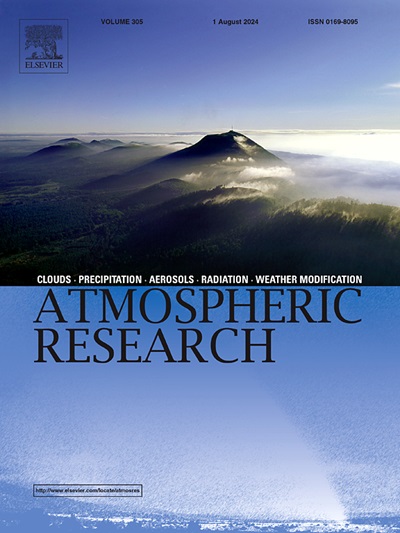Analysis of the spatial and temporal evolution pattern of PM2.5 and its influencing factors on the Loess Plateau
IF 4.5
2区 地球科学
Q1 METEOROLOGY & ATMOSPHERIC SCIENCES
引用次数: 0
Abstract
As a major source of atmospheric pollution, the spatiotemporal evolution patterns and influencing factors of PM2.5 are crucial for the regulation of air quality. The Loess Plateau, a vital ecological barrier in China, is a transitional zone for northwest dust transport and eastern industrial pollution, making its environmental issues particularly significant. With its fragile ecosystem, PM2.5 pollution not only degrades air quality but may also exacerbate soil erosion and ecological degradation. Understanding PM2.5 distribution patterns is essential for formulating regional ecological protection strategies and promoting sustainable development. However, research on the spatiotemporal distribution and influencing factors of air pollutants in this region remains limited. This study analyzed PM2.5 vector data from 2010 to 2020 to explore its spatiotemporal characteristics and influencing factors. Results indicate that the annual mean PM2.5 concentration decreased during this period, from 44.570 μg·m−3 in 2010 to 30.207 μg·m−3 in 2020, a decrease of 32.25 %. In terms of spatial distribution, the PM2.5 concentration shows a pattern of ‘high in the southeast and low in the northwest’, with hotspots mainly concentrated in the provinces of Henan, Shanxi, and Shaanxi, and cold spots in Inner Mongolia and Qinghai. Through geodetectors and correlation analyses, it was found that natural factors (e.g., altitude, temperature, and precipitation) had a significantly greater influence on PM2.5 concentrations than socioeconomic factors. In particular, elevation (DEM) had the strongest explanatory power for PM2.5 concentrations and was significantly negatively correlated with PM2.5 concentrations. It was also found that PM2.5 concentrations were significantly higher in winter than in other seasons, mainly due to low winter temperatures, inversions, and residents' reliance on coal for heating. The airflow in Xi'an and Taiyuan mainly originated from the north-west, with 53.53 % and 58.09 %, respectively. Potential source areas for Xi'an included Guangyuan, Yuncheng, Xiangyang, and Yan'an, while Taiyuan's sources were primarily Shijiazhuang (Hebei) and Zhengzhou (Henan). Overall, the control of PM2.5 pollution in the Loess Plateau has achieved remarkable results, but interregional synergistic management and ecological protection still need to be strengthened in the future.
黄土高原 PM2.5 的时空演变模式及其影响因素分析
本文章由计算机程序翻译,如有差异,请以英文原文为准。
求助全文
约1分钟内获得全文
求助全文
来源期刊

Atmospheric Research
地学-气象与大气科学
CiteScore
9.40
自引率
10.90%
发文量
460
审稿时长
47 days
期刊介绍:
The journal publishes scientific papers (research papers, review articles, letters and notes) dealing with the part of the atmosphere where meteorological events occur. Attention is given to all processes extending from the earth surface to the tropopause, but special emphasis continues to be devoted to the physics of clouds, mesoscale meteorology and air pollution, i.e. atmospheric aerosols; microphysical processes; cloud dynamics and thermodynamics; numerical simulation, climatology, climate change and weather modification.
 求助内容:
求助内容: 应助结果提醒方式:
应助结果提醒方式:


